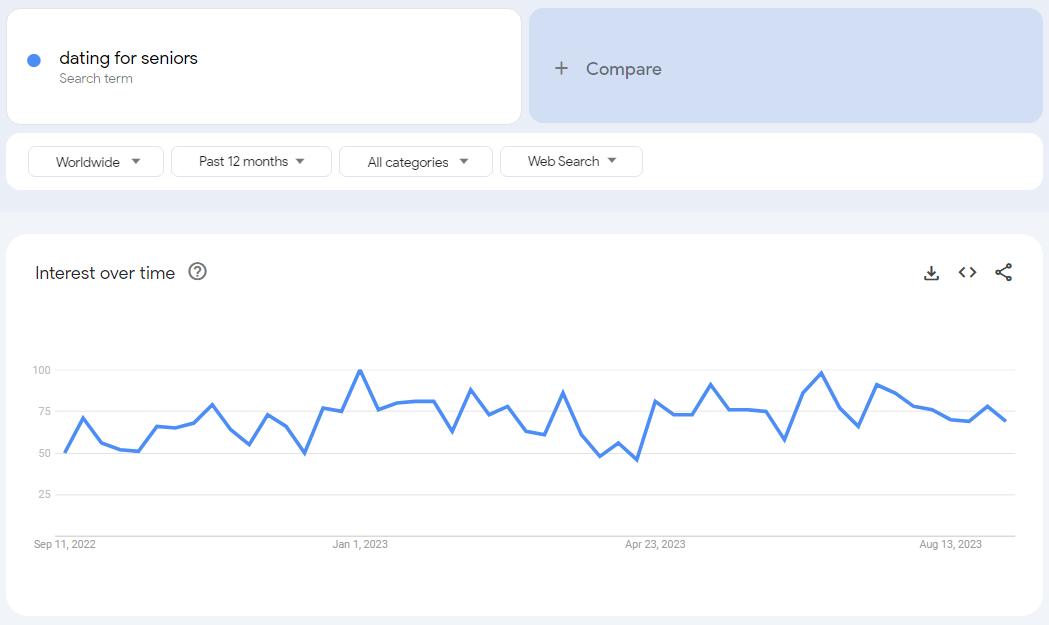How to find your niche in 6 steps (2026)
To achieve business success, adopt a systematic strategy and select a niche characterized by qualities favorable for online growth.
Market niches are subsets of larger markets, distinguished by specific traits like needs, preferences, and distinct identities that differentiate them from the broader market. This is the particular segment where you should establish your business presence.
In this concise guide, we’ll walk you through the process of identifying your niche and deciding on the products to offer within it. Additionally, we’ll demonstrate how to assess the demand for your business concepts and introduce some tools to gauge the competition in those sectors.
6 Steps to Discovering Your Niche:
- Assess your passions and abilities.
- Explore several potential niches.
- Refine your niche selection.
- Confirm the viability of your niche.
- Experiment with your chosen niche.
Assess your passions and abilities.
Reflect on Your Interests and Strengths Your niche often emerges from a blend of your passions and talents. Consider these questions:
- Which subjects ignite my passion?
- What are my strong suits?
- Do I have a hobby I deeply cherish?
These considerations are pivotal in pinpointing your niche.
For example, if you have a deep understanding of relationships and a talent for giving advice, you might find fulfillment in relationship coaching or writing about dating experiences and lessons. Combining these insights and skills could steer you towards a specialized niche within the dating world.
Alternatively, if your heart lies in whipping up healthy dishes, you might be inclined towards retailing kitchen tools or penning down recipes for a dedicated food blog. This combo of interests and aptitude would pave the way for a niche in the culinary sector.
Ultimately, the essence lies in recognizing a domain that aligns with both your passion and prowess. Such a fusion not only simplifies niche discovery but also ensures you relish every moment of it.
Explore several potential niches.
Once you’ve reflected on your passions and strengths, begin exploring possible niches. At this stage, aim to compile an extensive list of niches. This helps in assessing demand, and you can refine this list as you proceed.
Niches can be characterized by:
- Pricing Tiers: luxury, mid-range, budget
- Quality Spectrum: premium, artisanal, value-based
- Location: targeting residents of a specific country, city, or even locality
- Demographic Factors: gender, age bracket, earning bracket, educational background
- Psychographic Elements: core beliefs, hobbies, behavioral tendencies
For example, consider the niche of senior dating. This niche addresses a segment within the broader dating scene, focusing on audiences like singles over 50, divorced or widowed individuals seeking companionship, all of which have their own unique needs and challenges.
Finding your niche in dating isn’t about broad strokes; it’s about zeroing in on specifics. Here’s how you can go about it:
Start with a Google Search: Begin by examining what existing dating platforms or blogs cater to. Using “dating for seniors” as a basis, delve into the search results. Explore various platforms, noting their specialties, the kind of content they produce, and the audiences they target. This can give you a clearer picture of potential gaps or underserved areas within the niche..
When it comes to the dating niche, the realm is vast and multi-faceted. Let’s explore this avenue:
Starting out, there’s a plethora of potential niche areas within dating, such as dating advice for introverts, relationship guidance for long-distance couples, or matchmaking services for people with specific interests or backgrounds.
Probe deeper to identify a particular segment of the dating world that feels overlooked, where you think you can bring fresh insights or solutions. It’s important to note that even if there’s competition, you can make a mark by fine-tuning your target audience and devising a unique marketing strategy.
Stay observant and in-tune with societal dynamics. Glean insights from personal experiences and those of peers and acquaintances.
For instance, in the realm of dating, perhaps you notice a gap in resources for single parents trying to navigate the dating scene. Or maybe there’s a lack of platforms catering to people looking for companionship later in life.
Identify these unique pain points and position your endeavor to address these specific challenges with tailored solutions.
Harness the power of search engines: Google’s autocomplete feature is invaluable here. As you type a query related to dating, such as “dating with…”, Google’s suggestions can provide insights into what people are actively searching for, giving you clues about potential niche areas within the dating landscape.
Additionally, employ keyword research tools to gauge search volume and emerging trends. This aids in pinpointing the most promising niches.
Seek out fervent online communities The internet has a knack for forming communities around shared hobbies, passions, and interests, essentially creating niches. Dive into active subreddits and observe their conversations.
Follow specific hashtags on platforms like Instagram and TikTok, such as #dating. These can provide insights into further specialized niches.
Determine market existence.
When pinpointing a niche, it’s vital to ensure there’s a sufficiently large market to make your venture viable. Targeting an overly narrow segment can be limiting.
Here are some strategies to assess if there’s an adequate market for your niche:
- Total Addressable Market (TAM): This represents the potential revenue your business could accrue if you cornered 100% of your intended market. Suppose you target a product at women aged 18-35; your TAM would equate to the total revenue earned by all entities selling to this age group.
- Niche Market Size: This refers to the subset of TAM that consists of your intended audience. Using the previous example, if you’re targeting women between 18-35, this segment within the TAM denotes your niche market size.
- Niche Market Growth Rate: This is indicative of how rapidly your selected niche is expanding. If targeting women aged 18-35, and this market segment grows at 5% annually, that’s your niche market’s growth rate.
Conduct thorough market research to evaluate the viability of your chosen niches. Google Trends is a handy tool to observe the trajectory of potential niches.
For instance, a trend analysis for “vegan shoes” may reveal steady demand over the past five years, suggesting it could be a worthwhile niche for budding entrepreneurs.
 Refine your niche selection.
Refine your niche selection.
As you refine your list of potential niches, consider the following criteria to help streamline your options:
- Do you possess any expertise or familiarity with this niche?
- Is this an area you’re genuinely enthusiastic about?
- Do you have any established contacts or networks within this niche?
- Is the niche overly general?
- Is the niche overly saturated with competitors?
- Can you genuinely envision carving out a successful digital business in this niche?
While you don’t need to meet every criterion, the more affirmative responses you garner, the more promising the niche. If you’re grappling with your selection, try these tactics:
- Delve deeper into the niches that resonate most with your passions. What distinguishes each in terms of unique selling propositions (USPs)?
- Consider amalgamating some niches. For instance, if you’re drawn to both fashion and eco-conscious living, why not venture into eco-friendly fashion?
- Ponder if certain niches can be further sub-divided. Let’s say you’re intrigued by the dating website sector; could you further hone in on specific dating subcategories (like senior dating, interracial dating) or other classifications?
Confirm the viability of your niche.
Before diving headfirst into your niche, it’s essential to validate its viability. Here are several strategies to ensure you’re on the right track:
- Assess the Competitive Landscape
- A populated market might indicate a strong demand, but it can also signal a saturated field where distinguishing yourself can be challenging. If you opt to venture into such a market, ensure you bring a distinct value proposition to differentiate your brand.
- Engage with Potential Clients
- Gauge their interest in your product or service and ascertain if they’d be inclined to purchase. You can also join online forums or groups pertinent to your niche to glean insights from ongoing discussions.
- Listen to their needs, problems, and aspirations. If your proposed solution keeps coming up, you might be onto something promising.
- Pre-build Your Audience
- Platforms like Kickstarter offer an avenue to showcase your concept even before its realization. By doing so, you can amass a community of potential consumers, primed and eager for your official launch.
- Stay Informed on Industry Trends
- To remain relevant, it’s vital to be attuned to the evolving dynamics of your chosen niche.
- Platforms like Think with Google or Nielsen can shed light on consumer behavior, emerging demands, and prevailing market trends.
- To maintain a pulse on the industry, configure Google Alerts for pertinent terms, and be an active observer of discussions on social media platforms.
The ultimate aim is to solicit genuine feedback regarding your niche proposition. Such insights can affirm or challenge your hypotheses, granting a clearer perspective on the commercial viability of your venture.
Experiment with your chosen niche.
To truly gauge the potential of a niche, consider piloting your idea. This might involve launching a blog, starting a YouTube channel, or even crafting a preliminary landing page related to your niche. If you can generate genuine interest, garner sign-ups, or make sales, you’re onto something promising.
Why is carving out a niche so pivotal?
Being successful in business often necessitates specialization. By selecting a niche, you position yourself as a trusted authority, making your brand a preferred choice for a particular audience segment. Delving into a niche offers the following advantages:
- Cultivates Brand Loyalty: Customers are more likely to gravitate towards a brand that caters to their specific needs rather than a generic, all-encompassing entity. They perceive a niche brand as more aligned with their values and requirements.
- Streamlines Marketing Efforts: Knowing your niche means you can fine-tune your marketing strategies. When targeting a more defined group, your promotions resonate better, optimizing advertising expenditure.
- Reinforces Expertise: Specializing in a niche bolsters your image as an industry authority. This not only fosters credibility but also strengthens the trust factor among your target audience.
- Enhances Profitability: Specializing allows you to delve deeper into the nuances of a particular consumer segment. When you can cater precisely to their needs, they’re more inclined to patronize your brand consistently and spend more.
Imagine you run a dating platform. Initially, you cater to a broad audience, covering multiple age brackets, interests, and backgrounds. To diversify, you introduce sections for hobby-based matchmaking – art lovers, fitness enthusiasts, movie buffs, and so on.
Now, if someone is seeking a partner with a shared passion for hiking, would they opt for your broad platform? Probably not.
However, imagine rebranding your platform specifically for individuals in the medical profession – a space for doctors, nurses, and other healthcare workers to connect. You design features catering to their unique schedules and challenges. Investing in ads and collaborating with medical influencers, your platform gradually becomes the primary choice for medical professionals seeking like-minded partners. Over time, you solidify your standing in the dating world as the premier site for those in healthcare.
Niche market examples
Understanding the importance of niches, let’s delve into some examples specifically within the dating arena for clarity.
- Eco-conscious Daters: With the surge in environmental awareness, there’s an emerging niche of singles passionate about sustainability.
This segment prioritizes environmental values in their potential partners. They’re more likely to connect with individuals who demonstrate sustainable habits in their daily life.
Within this niche, there could be subcategories like:
- Vegans seeking vegan partners
- Individuals committed to zero-waste lifestyles
- Outdoorsy types who enjoy nature-based activities together
- Pet Lover Connections: The bond between individuals and their pets is undeniable. Hence, there’s a dating segment dedicated solely to pet lovers.
Imagine a platform where users can not only share pictures of themselves but also their pets, illustrating their love for animals. This is especially prevalent for certain pet owners who believe compatibility extends to how potential partners react to their pets.
Sub-niches could include:
- Dog owners seeking fellow dog enthusiasts
- Exotic pet owners looking for understanding partners
- Singles involved in animal rescue or activism
- Local Love: Amidst the world of global connections, there’s a rising demand for local connections. Singles are increasingly looking to connect with individuals in their immediate surroundings, emphasizing shared cultural or city-specific experiences.
For instance, a dating app might cater specifically to New Yorkers, offering features that allow users to pick date spots within the city, share their favorite NYC hangouts, or discuss local events.
Sub-niches within this could be:
- Individuals looking for partners within a specific borough or neighborhood
- City-centric events or activities-based dating
- Locals seeking tourists for unique city exploration dates
The world of dating is vast, and by aligning with specific niches, platforms can offer more tailored experiences, increasing their chances of successful matches.
Navigating the Dating Niche Landscape:
Identifying Unique Dating Products and Services: As you embark on the journey of diving deep into the dating niche, consider these strategies to identify unique products and services that cater to this market.
- Complementary Services: Just as in the retail world, where big-ticket items aren’t the sole profit generators, consider not just primary dating services but also complementary offerings. Think beyond just the matchmaking platform; consider things like relationship advice e-books, merchandise like relationship journals or planners, and even date night accessories or kits. These complementary products can significantly bolster your revenue.
- Target Distinct Demographics: In the world of dating, individuals are driven by unique desires, problems, and passions. Some may be seeking partners based on specific hobbies or lifestyles (like fitness enthusiasts or art lovers). Others may be looking for solutions to dating challenges, such as building confidence or understanding modern dating etiquette. Cater to these specific needs and passions for a more tailored offering.
- Price Point Sweet Spot: When offering premium features or specialized matchmaking services, aim for a price range that strikes a balance. It should be affordable enough for the user to see value, yet high enough to reflect the premium nature of the service. Be wary of pricing too high that it deters users, or too low that it affects perceived value.
- Localized Dating Experiences: While global connections have their charm, local dating experiences can offer a unique proposition. Think of niche services like speed dating events in specific cities or local date planning services. This provides an advantage over broader platforms.
- Evergreen Dating Advice: Instead of continuously updating your offerings, provide evergreen dating advice and tools. Relationship principles, self-growth tools, and compatibility quizzes are examples of offerings that remain relevant over time.
- Subscription Services: The dating world is ever-evolving. Offering monthly or quarterly subscription boxes with dating tips, tools, or even date night ideas can ensure a steady revenue stream and foster brand loyalty.
However, it’s not just about identifying the right niche. Equally essential is gauging demand and competition. While a particular dating niche may seem perfect, without adequate demand or in the face of intense competition, it may not prove viable.
Overcoming Niche Selection Hurdles: Should you find it challenging to pinpoint the ideal niche within the dating world, remember that adaptability is key. If targeting adventure-seeking singles in New York seems too restrictive, consider expanding to adventure seekers across the East Coast. Continuously refine and adjust based on feedback and market demands.
Lastly, as you evolve within the dating niche, maintain a keen understanding of your audience’s needs. This not only aids in retention but also ensures that your offerings remain relevant and desirable. Tailored marketing approaches, highlighting how your product or service is “just right” for the user, can further enhance your success in this vast and varied niche.









